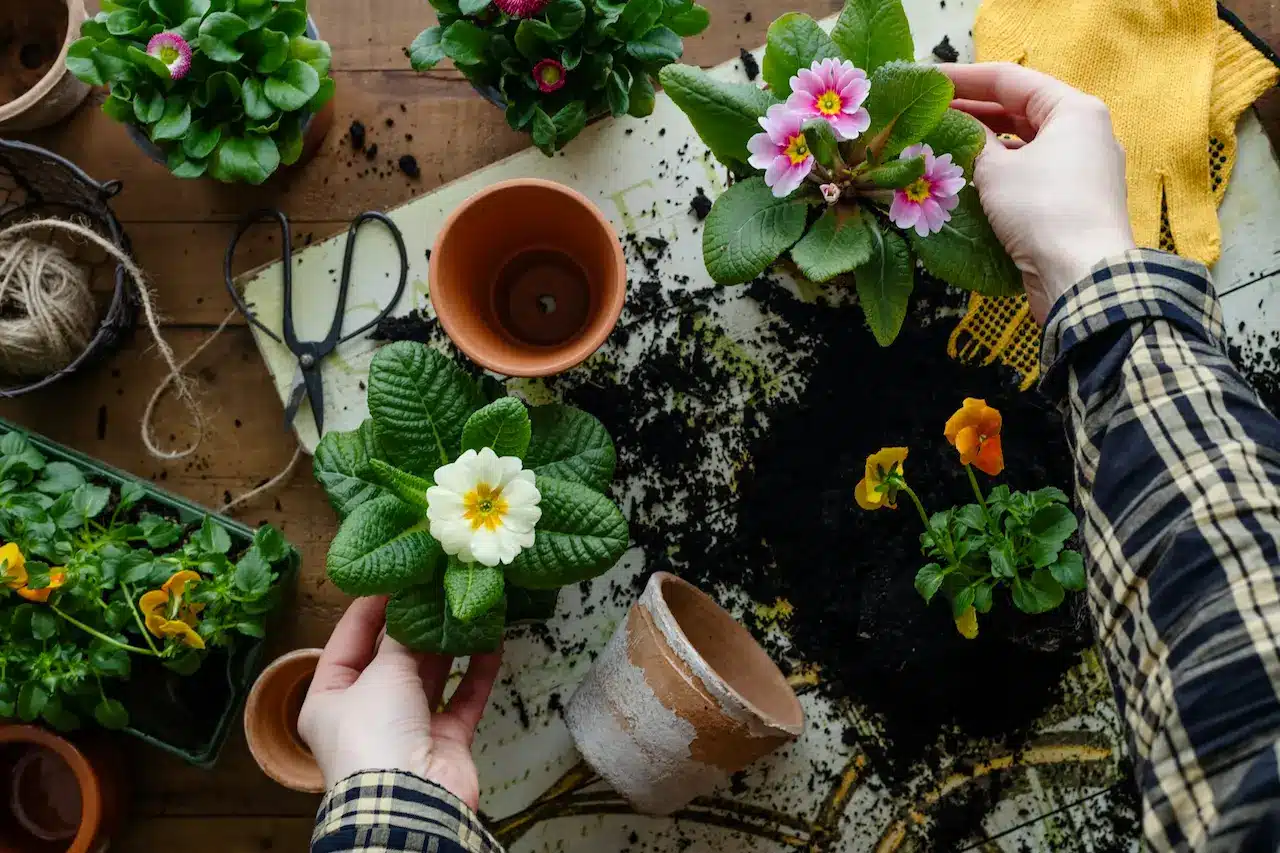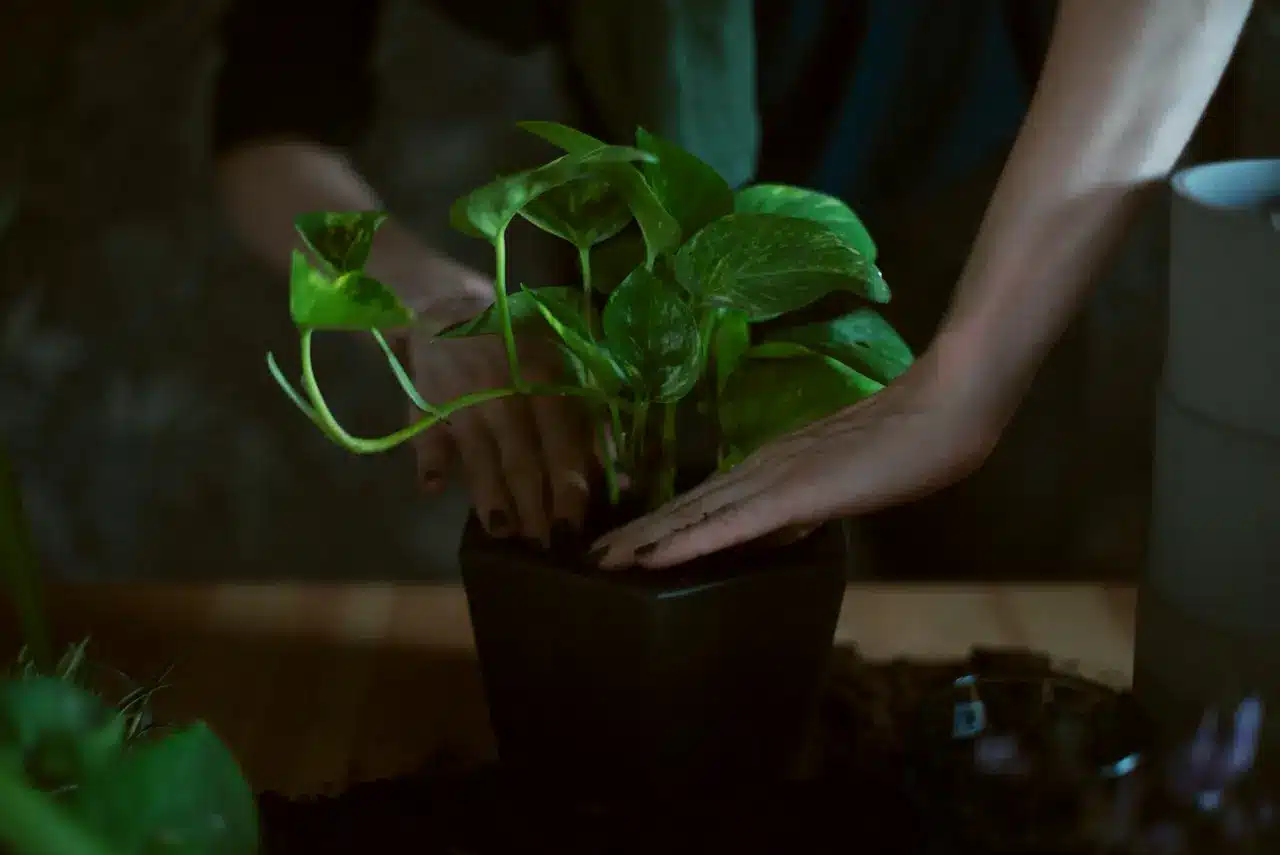Some artificial plants come with a full design, meaning there’s also some sort of plastic that imitates the appearance of soil. Some others don’t, especially if you’re after some fancy or better-looking planters for a nice display.
To keep artificial plants both secure and attractive, you can use all sorts of materials. Obviously, natural materials are more likely to look better, since they give your plant a more authentic appearance. But then, it also depends on what you’re trying to achieve.
Here are a few common materials to fill your artificial pots and planters.
How to Obtain a Natural Appearance
Getting a big planter for artificial plants isn’t everything if it has a plasticky look. No matter how natural your faux plants look, the planter could become an issue. However, you can sort this problem out by filling it up with some natural materials.
Wood chips are excellent from this point of view. They add warmth and a rustic charm, blending beautifully with both indoor and outdoor settings.
Bark is just as common and can be found in pretty much every gardening store out there. Both options can be rustic, but what’s more important is the natural appearance.
Other than that, bark or wood chips could also work in modern and minimalist homes. Natural materials can become a focal point and add a bit of color too.
If you’re after a greener approach, moss is an excellent alternative. Moss has a great texture that will blend perfectly into any type of design. It’s green and offers a more natural appearance, but at the same time, its texture is excellent to hide the base of your artificial plant.
Last, but not least, if you’re after a more modern appearance, but without compromising the natural aspect, feel free to grab small bags of small stones or pebbles.
These days, they’re available in all kinds of sizes, colours and shapes. For example, imagine some large white stones in an ultra-modern home. You can also invest in small red stones, ideal for a cactus.
All in all, they can be used to fill the whole planter or just to conceal the top. The possibilities are endless, and the result is a planter that looks as thoughtfully designed as the plants it holds.

Stability Along Appearance
Filling up pots for artificial plants isn’t all about the design and appearance. The above-mentioned options are great to hide something. Unless you go for heavy pebbles, you won’t have any stability with moss or bark though.
And if you think about it, your planter does need a heavy base or it might go down whenever you touch it. Not a good idea if you have pets or kids.
Sand is a good option to provide some stability, but also some weight. Regular soil is a good alternative too. However, make sure you get some soil with no actual treatments or nutrients. Your artificial plant doesn’t need them. And some of them may develop disease if not looked after.
One of the main reasons wherefore people go for artificial plants is the lack of maintenance. The last thing you want is having to look after the soil in the planter instead.
Now, based on how large the planter is, you can use anything that’s heavy enough to add stability. You can add ugly rocks, some old bricks or anything else that’s heavy. Just make sure you cover the top with something that looks good, simple as that. In short, you need sturdy base for safety and a stylish top layer for aesthetics.

Hanging Pots? No Problem!
Hanging pots are somewhere in between. Sometimes, they’re quite tall, so no one can see what’s inside them. Other times, the inside of the pot is visible, so you’ll have to cover it. But then, it’s a hanging pot, so you don’t want anything too heavy either.
If you’re looking for something light, floral foam is a good idea. Styrofoam is just as effective. They’re ideal for small plants, but without adding too much weight.
If you got some old newspapers, they’re just as good. If you’ve just ordered something online, use cardboard from the packaging. These options are natural and even recycled. They can fill the bottom of the pot without even using too much material.
Packing peanuts are great too, not to mention pool noodles. If you’re thinking about recycling, you can also crush cans from your bin. However, keep in mind that metallic things will rust with time, especially if your artificial plants are outside. That rust may expand and affect the appearance of your plants. So, it’s best to avoid metal fillers if your planters will be exposed to the elements.
An easier option implies using crushed plastic bottles. They’re pretty good at filling space without weighing too much. Just make sure to rinse them out first to avoid any lingering odors or residue.
While none of these options is attractive enough, they’re excellent if you need something light to fill the pots. At the same time, you can always leave anything between half an inch and a couple of inches to fill up with something decorative, such as moss or bark.
In the end, there are quite a few options when not sure what materials to use for your artificial pots. Choosing the right one depends on the types of pots, size and available budget.
